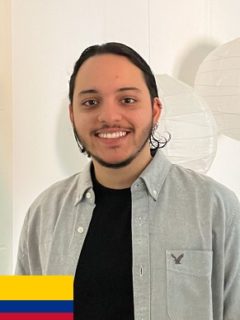Enrique Charry Hurtado
Enrique Charry Hurtado
Ehemaliger Gaststudent (Universidad ICESI, Colombia)
Bioactive glasses-based scaffolds and polymer fibers containing bioactive glass particles
Betreuer: Marcela Arango-Ospina, Prof. Aldo R. Boccaccini
One aspect of tissue engineering involves the development of highly porous biomaterials, known as scaffolds, that serve to guide the regeneration of new tissues, by supplying a matrix with interconnected porosity and tailored surface chemistry for cell growth [1], [2]. In the last decades, bioactive glasses (BG) have been reported to be suitable materials for tissue regeneration applications, and it has been shown their great osteogenesis capacity [3]. In this study, BG-based scaffolds will be produced with the foam replication technique and 3D printing. The resulting scaffolds will be evaluated for their mechanical and bioactivity properties. On a second phase of this project, the electrospinning technique will be used to produce polymer fibers containing BG particles.
[1] F. J. O’Brien, “Biomaterials & scaffolds for tissue engineering,” Materials Today, vol. 14, no. 3, pp. 88–95, Mar. 2011, doi: 10.1016/S1369-7021(11)70058-X.
[2] D. W. Hutmacher, “Scaffolds in tissue engineering bone and cartilage,” Biomaterials, vol. 21, no. 24, pp. 2529–2543, Dec. 2000, doi: 10.1016/S0142-9612(00)00121-6.
[3] A. A. El-Rashidy, et al., „Regenerating bone with bioactive glass scaffolds: A review of in vivo studies in bone defect models“, Acta Biomater. vol. 62, pp. 1-2, 2017.

